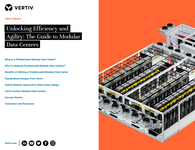According to Cisco, the world will generate more IP traffic in 2022 than we have in the first 32 years of the Internet era combined. That is a massive influx of data to be stored, analyzed and transmitted across an already strapped network. Complicating matters, more and more of this data will come from or be accessed by distributed sources – 12 billion mobile devices and IoT connections, to be specific – and 82 percent of all IP traffic in 2022 will be video. It’s not a stretch to say the networks we will need to support our computing demands in 2022 bear only a passing resemblance to those we see today.
The transformation is happening already. Today’s networks are increasingly distributed, with vast amounts of computing pushed to the edge of the network where it can be accessed quickly to meet end-user demand. These edge sites can be one component of emerging hybrid networks that leverage the edge with public and/or private cloud resources, all integrated around a sleek, efficient enterprise facility at the core. These hybrid architectures are becoming the new normal because they use each component to meet specific organizational or end-user needs. That’s one thing that isn’t changing: Need drives innovation and the deployment of network resources.
Needs today and in the near future increasingly include support for advanced applications and services, such as video streaming, social sharing, artificial intelligence (AI), and critical business activities such as banking and advanced medical procedures. As the volume and complexity of such demands increase, it applies significant pressure to providers to expand their networks quickly.
Or course, increasing compute demand isn’t exactly “man bites dog” level news. Whether it was the Internet, or the smartphone, or the cloud, innovation has been driving urgent network computing demands for 30 years. What’s happening today may not be new, but it is different. Consider: All of these advances are creating a cascading data avalanche and pace of network growth that is orders of magnitude beyond the surge from any single technology innovation. More is happening, and it’s happening faster than ever.
The challenge of keeping pace
With that in mind, deploying technologies quickly is more critical than ever, and deployment speed is becoming another layer of differentiation. This is especially true at the edge, where delays mean lack of service – and revenue.
In the past, we’ve addressed pressing needs for capacity by overbuilding and overprovisioning, but that approach is inefficient and requires significant investment with no guarantee or timeline for a return. That is especially true with today’s distributed networks. It’s one thing to overprovision a single data center; it stings, but it’s a one-time pain. Overprovisioning hundreds or thousands of edge sites is the kind of hurt that lingers. That’s why more and more organizations are opting for modular solutions that allow them to scale intelligently.
Prefabricated modular solutions are becoming a popular choice because they deliver capacity where and when it’s needed and offer other, less obvious advantages. For example:
- By normalizing and industrializing design, you can establish a reliable supply chain and repeatable manufacturing processes to streamline deployment.
- Using prefabricated modular solutions eliminates the need for or reduces the complicated coordination required between architects, civil, structural and electrical engineers and contractors.
- These solutions allow organizations to work on various tasks in parallel without waiting at a site for structures to be finished or different pieces of equipment to arrive. This simplifies project scheduling and reduces construction timelines.
- If needed, prefabricated modular components can even function outside an unfinished structure, adding capacity offsite while other elements are under construction.
For larger, more traditional data centers, adding capacity in modules is more cost effective and reduces risk. Once an organization identifies a set of building blocks that delivers what it wants, it eliminates the need to build a custom snowflake every time it needs to add capacity. Data centers are complex, but every decision doesn’t have to be. Prefabricated modular solutions offer a simpler, more straightforward, and repeatable option.
Likewise, as the edge becomes more important, the consistency and uniformity of prefabricated solutions becomes more valuable. A retailer with 1,000 small edge sites isn’t likely to have an IT professional available to deploy, operate and service all of those sites. A standardized solution simplifies those tasks by ensuring every site is basically the same. Every truck run is equipped with the right tools and parts, because every site is fundamentally the same.
How fast is fast?
In almost all instances, prefabricated modular solutions can be deployed faster, operationalized faster and serviced faster. But what is “faster?” This is a difficult question because so many sites are different. Are we talking about a full data center or an edge site? What size? Is it a new build or an expansion? How much capacity is being added? Where is it located? All of these questions and others impact just how fast a job can be completed and the difference between prefab and traditional approaches.
Broadly speaking, we have found prefabricated deployments typically shave anywhere from weeks to months from a typical project. These are significant differences, and if speed of deployment is critical to an organization – and in our experience it almost always is – those differences matter. Speed may not be the only differentiator, but it’s always part of the conversation.
Bottom line: The ability to deploy technologies quickly and cost effectively has never been more important, especially as networks become more distributed and the edge becomes more mission critical. Overprovisioning is a relic from another data center era. Today, organizations place a premium on the ability to grow intelligently by adding capacity when and where it’s needed. Prefabricated modular solutions are one way to get there.





